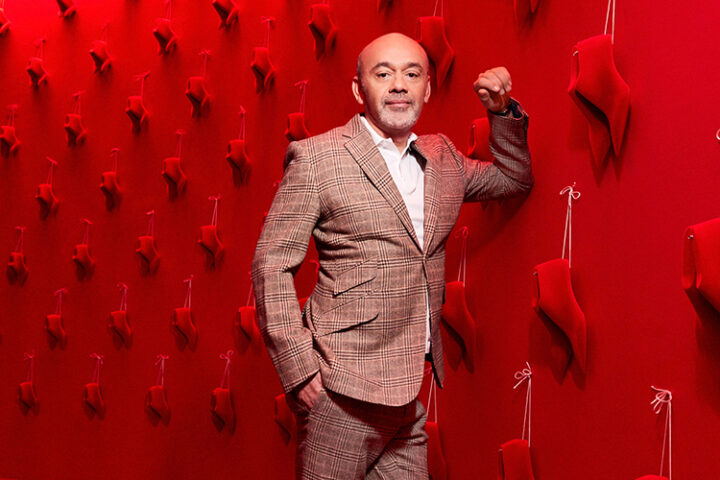Zara is one of the world’s most successful fashion retail brands – if not the most successful one. With its dramatic introduction of the concept of “fast fashion” retail since it was founded in 1975 in Spain. Zara was founded by Amancio Ortega and Rosalía Mera in 1975 as a family business in downtown Galicia in the northern part of Spain. Its first store featured low-priced lookalike products of popular, higher-end clothing and fashion.
In the next 8 years, Zara’s approach towards fashion and its business model gradually generated traction with the Spanish consumer. This led to the opening of 9 new stores in the biggest cities of Spain.In the next decade, Zara began aggressively expanding into global markets, which included Portugal, New York (USA), Paris (France), Mexico, Greece, Belgium, Sweden, Malta, Cyprus, Norway and Israel. Today, there is hardly a developed country without a Zara store. Zara now has 2,264 stores strategically located in leading cities across 96 countries.Today, Inditex is the world’s largest fashion group with more than 174,000 employees operating more than 7,400 stores in 202 markets worldwide including 49 online markets. The revenues of Inditex was USD 23.4 billion in 2019.
Its core values are found in four simple terms: beauty, clarity, functionality and sustainability. The secret to Zara’s success has largely being driven by its ability to keep up with rapidly changing fashion trends and showcase it in its collections with very little delay.The brand keeps a close watch on how fashion is changing and evolving every day across the world. Based on latest styles and trends, it creates new designs and puts them into stores in a week or two. In stark comparison, most other fashion brands would take close to six months to get new designs and collections into the market.It is through this strategic ability of introducing new collections based on latest trends in a rapid manner that enabled Zara to beat other competitors.
Zara’s unrelenting focus on the customer is at the core of the brand’s success and the heights it has achieved today. There was a fascinating story around how Zara co-creates its products leveraging its customers’ input. In 2015, a lady named Miko walked into a Zara store in Tokyo and asked the store assistant for a pink scarf, but the store did not have any pink scarves. The same happened almost simultaneously for Michelle in Toronto, Elaine in San Francisco, and Giselle in Frankfurt, who all walked into Zara stores and asked for pink scarves. They all left the stores without any scarves – an experience many other Zara fans encountered globally in different Zara stores over the next few days.7 days later, more than 2,000 Zara stores globally started selling pink scarves.
One of the other reasons for its success is its super-efficient supply chain. Zara’s highly responsive, vertically integrated supply chain enables the export of garments 24 hours, 365 days of the year, resulting in the shipping of new products to stores twice a week. After products are designed, they take around 10 to 15 days to reach the stores. All clothing items are processed through the distribution center in Spain, where new items are inspected, sorted, tagged, and loaded into trucks. In most cases, clothing items are delivered to stores within 48 hours.Zara has a very entrepreneurial culture, and employs lots of young talent who quickly climb through the ranks of the company. Zara promotes approximately two-thirds of its store managers from within and generally experiences low turnover. The brand has no fear in giving responsibility to young people and the culture encourages risk-taking. Thus conclusively the secrets behind Zara’s global success is the culture and the respect for the fact that no one is a better, authentic trendsetter than the customer himself or herself – and this philosophy needs to be continually reflected in all its business strategies going forward.
Zara is one among the world’s most flourishing fashion retail brands – if not the foremost flourishing one. With its dramatic introduction of the thought of “fast fashion” retail since it a was based in 1975 in Spain. Zara was invented by Amancio Ortega and Rosalía Mera in 1975 as a privately held corporation in downtown geographic region within thenorthern a part of spain. Its 1ststore featured cheap lookalike merchandise of common, higher-end vesture and fashion.
In the next eight years, Zara’s approach towards fashion and its business model bit by bitgenerated traction with the Spanish client. This led to the opening of nine new stores within the biggest cities of Spain. Within the next decade, Zara began sharply increasing into worldmarkets, including European country, the big apple (USA), Paris (France), Mexico, Greece, Belgium, Sweden, Malta, Cyprus, Scandinavian country and Israel. Today, there’s few developed country while not a Zara store. Zara currently has two,264 stores strategically situated in leading cities across ninety six countries. Today, it is the world’s largest fashion cluster with quite174,000 staff operative quiteseven,400 stores in 202 markets worldwide as well as forty nine on-line markets. The revenues of Inditex was USD twenty three.4 billion in 2019.
Its core values can be found in four easy terms: beauty, clarity, practicality and property. the key to Zara’s success has mostly being driven by its ability to stay up with ever-changing fashion trends and showcase it in its collections with little delay. The whole keeps a detailed watch on however fashion is ever-changing and evolving on a daily basis across the planet. Supported by latest designs and trends, it creates new styles and puts them into stores in a veryweek or 2. In stark comparison, most alternative fashion brands would take on the brink of six months to induce new styles and collections into the market. It’s through this strategic ability of introducing new collections supported latest trends in a very fast manner that enabled Zara to beat alternative competitors.
Author: Muskan Madaan
 Muskan Madaan is a third year Bcom.llb student at Panjab University. She has a keen interest towards public policy making, human rights and commercial law. Currently she is exploring her way through various branches of law. Other than that she enjoys writing articles on social issues and commercial changes. She also a fellow at a NGO by the name of Make a Difference where she helps underprivileged children to map their careers. She has internship experience from diverse commissions, legal firms and organisations and she aspires for more exposure and enriching experiences in the future.
Muskan Madaan is a third year Bcom.llb student at Panjab University. She has a keen interest towards public policy making, human rights and commercial law. Currently she is exploring her way through various branches of law. Other than that she enjoys writing articles on social issues and commercial changes. She also a fellow at a NGO by the name of Make a Difference where she helps underprivileged children to map their careers. She has internship experience from diverse commissions, legal firms and organisations and she aspires for more exposure and enriching experiences in the future.










An interesting discussion is worth comment. I think that you should write more on this topic, it might not be a taboo subject but generally people are not enough to speak on such topics. To the next. Cheers